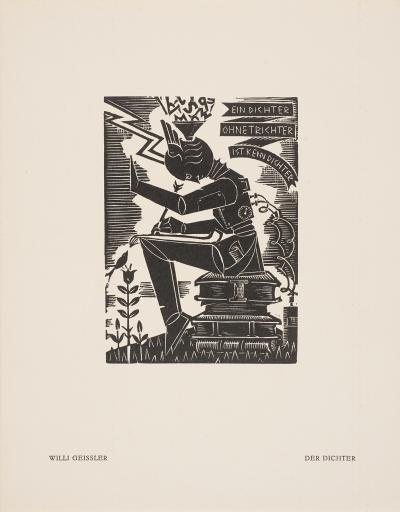Der Dichter (The Poet), Wilhelm Geissler
Artwork Overview
Wilhelm Geissler, artist
1895–1977
Der Dichter (The Poet),
circa 1925
Portfolio/Series title: Der künstliche Mensch / Zehn Blätter der Anklage (The Artificial Man / Ten pages for the prosecution), from Kunst der Jugend (Art of Youth) no. 7
Where object was made: Germany
Material/technique: woodcut; wove paper
Dimensions:
Image Dimensions Height/Width (Height x Width): 150 x 110 mm
Image Dimensions Height/Width (Height x Width): 5 7/8 x 4 5/16 in
Sheet/Paper Dimensions (Height x Width): 290 x 228 mm
Sheet/Paper Dimensions (Height x Width): 11 7/16 x 9 in
Image Dimensions Height/Width (Height x Width): 150 x 110 mm
Image Dimensions Height/Width (Height x Width): 5 7/8 x 4 5/16 in
Sheet/Paper Dimensions (Height x Width): 290 x 228 mm
Sheet/Paper Dimensions (Height x Width): 11 7/16 x 9 in
Credit line: Museum purchase: Elmer F. Pierson Fund
Accession number: 2011.0075.08
Not on display
If you wish to reproduce this image, please submit an image request

